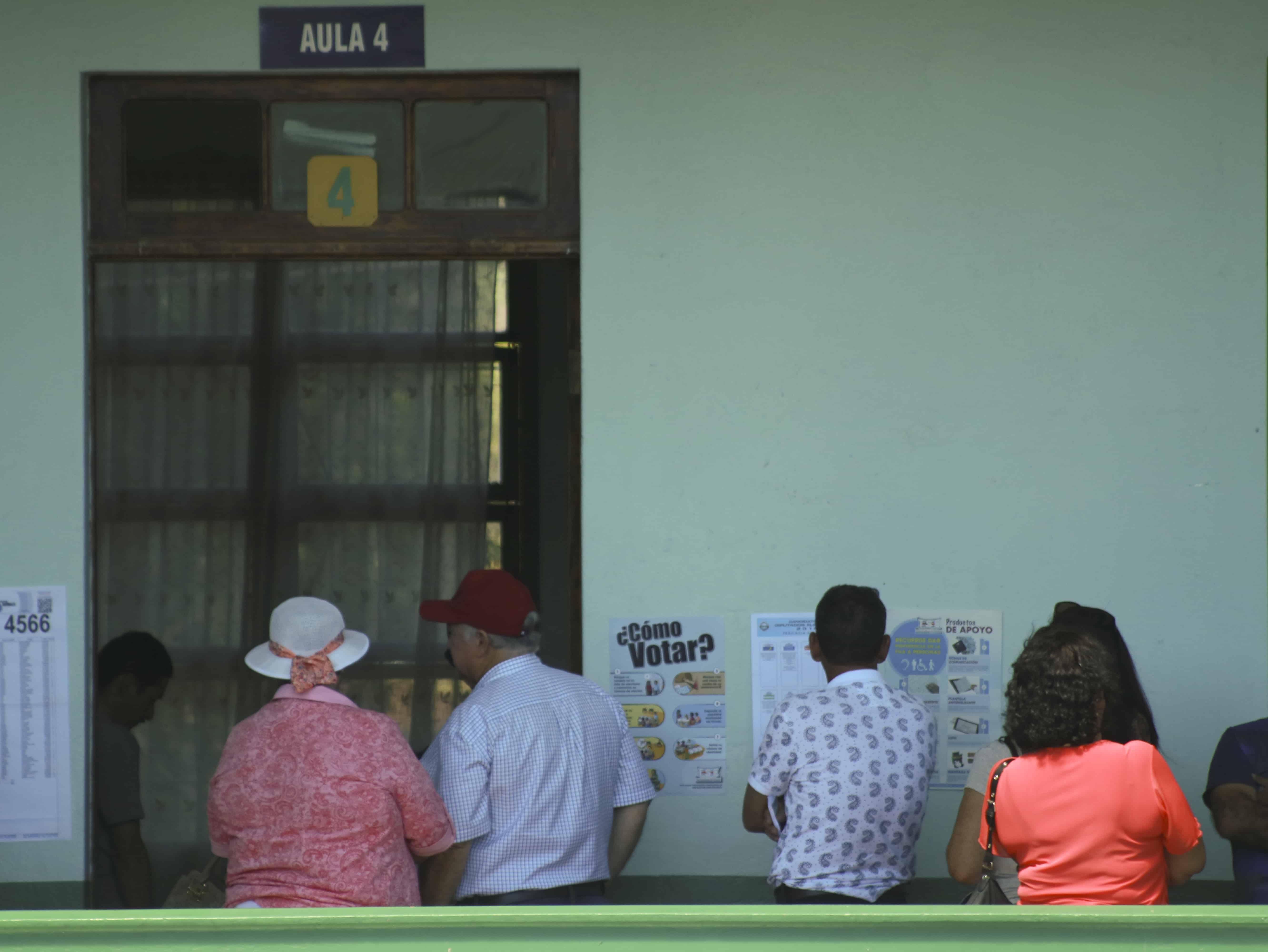Costa Rica will hold the second round of voting in its presidential elections this Sunday. Voters will choose between two candidates in the runoff: neo-Pentecostal preacher and former legislator Fabricio Alvarado, of the evangelical National Restoration Party (PRN), or former Cabinet minister Carlos Alvarado, of the ruling Citizen Action Party (PAC).
Here are five elements to help understand the context of this unusual vote.
A bipartisan past disappearing in the rearview
For the first time since 1950, the two political forces that once dominated the electoral landscape – the National Liberation Party (PLN) and the Social Christian Unity Party (PUSC) – are out of the running for the second round. (The Costa Rican Constitution calls for a second round whenever no candidate reaches 40 percent of the vote in the first round.)
Leaders from these two traditional parties have split their support between the PRN and center-left PAC.
Political analyst Gustavo Araya, of the Latin American Faculty of Social Sciences (FLACSO), says that the bipartisan system began to break up after the 1998 presidential elections, the last time the two traditional giants shared nearly 90 percent of the vote. The creation of the PAC in the year 2000 consolidated the change, taking votes away from the traditional parties in increasing numbers until the party’s candidate, Luis Guillermo Solís, won the presidency in 2014.
Antonio Álvarez Desanti and the memory of bygone bipartisanship
Evangelical surge
Fabricio Alvarado’s strength in the current campaign is a reflection of the growth of evangelical churches in Costa Rica.
A study by the Pew Research Center in the United States shows that the evangelical population of Costa Rica rose from 8.6 percent in 1983 to 23 percent in 2012. In that same period, the Catholic Church, the official state religion, lost 31 percent of its congregants.
Today, 52 percent of the population identifies as Catholic, the lowest level ever registered. This figure was published on March 6 as part of a poll by the University of Costa Rica’s Center for Research and Political Studies (CIEP).
The same poll recorded 22 percent of respondents as evangelical, and 17 percent identifying themselves as believers but without any religion.
Data from the Latin American Program for Religious Studies shows that in 2014, Costa Rica had 3,752 religious congregations connected to one evangelical association or another.
The heart of Fabricio Alvarado, part III: Evangelical growth
Stable democracy; no army
Costa Rica is one of Latin America’s most stable democracies. It suffered an interruption of its constitutional order in 1917-1919 when President Alfredo González Flores was defeated by his Minister of War, Federico Tinoco. In 1948, the country experienced a 44-day civil war brought on by allegations of fraud in that year’s elections.
The victors of that war established a governing board that abolished the army and set up the framework for the modernization of the country. From that point on, its stable democracy with presidential elections every four years remained intact even during the 1980s, when unrest and civil war affected other Central American nations.
Economic growth; fiscal deficit
Costa Rica’s economy has been stable for several years, with growth rates close to four percent. According to the World Bank, Costa Rica’s GDP grew by 3.9 percent in 2017 and the Outlook for 2018 is 3.7 percent.
However, the country has high unemployment rates, reaching 9.3 percent at the end of 2017.
The country’s biggest economic problem is its deficit, which reached 6.2 percent of GDP in 2017, the highest ever recorded by the Central Bank. The administration of President Solís, like the three administrations before him, has failed to secure the approval of the Legislative Assembly for a tax reform that would deal with this crisis.
Costa Rica meets its new presidential candidates – fresh from the middle of the pack
Increasing violence
During the first months of 2018, Costa Rica has experienced a spike in femicides, with eight cases thus far. This represents a steep increase, since the total number recorded in 2017 was just 16.
President Solís expressed his alarm about this wave of violence against women and called for new policies to guarantee women’s rights and safety.
At the same time, violence in general has increased, with 603 violent deaths reported in 2017, the highest homicide rate in the country’s history. This increase has been attributed primarily to score-settling among gangs and to drug trafficking, according to the Judicial Investigation Police (OIJ).
The homicide rate corresponds to 12.1 murders for every 100,000 inhabitants. The World Health Organization classifies any rate over 10 per 100,000 as an “epidemic.”
President sounds alarm over the murder of women in Costa Rica






